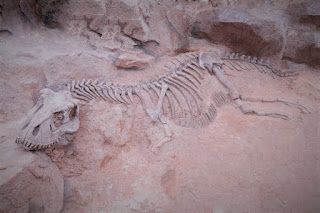Brachiosaurus
Brachiosaurus, whose name signifies "arm reptile," was the giraffe dinosaur of the Jurassic. With its long neck (very nearly 30 feet in length) and tall front legs, this goliath sauropod could nip new shoots from the highest points of trees in excess of 40 feet over the ground. in case Brachiosaurus were alive today, it could look into fourth story windows. This is the biggest sauropod known from almost complete skeletons. For some scientistss, this is the boss for size. Gauging 50 tons, probably as much as seven elephants, Brachiosaurus was a gigantic dinosaur that needed to take care of continually. The front legs were taller than the back legs, and the tail was generally short. Brachiosaurus was weighty toward the front and light in the back. the rib confine was gigantic, but since the legs were so tall, the stomach was so distant the ground that a stegosaurus could stroll under it. The long neck and front legs look like the body of a giraffe, and it is co...





Comments
Post a Comment